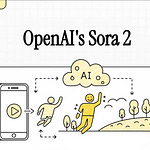Introduction: The Spark of a Revolution
The current explosion in AI capabilities, from chatbots that write poetry to powerful code assistants, didn’t happen overnight. It was built on a series of foundational breakthroughs, and one of the most pivotal is a 2017 paper from Google researchers titled “Attention Is All You Need.” While it may not be a household name, its core ideas are the engine behind models like ChatGPT, Gemini, and countless other modern AI systems.
At the time, the field of language processing was dominated by a class of models called Recurrent Neural Networks (RNNs). While powerful, these models were hitting a fundamental wall. They processed language sequentially—one word after another—which made them slow and difficult to scale to the massive datasets needed for the next leap in performance. The “Attention Is All You Need” paper proposed a radically different architecture, the Transformer, that threw out this sequential approach entirely.
This article breaks down the five most impactful and counter-intuitive ideas from the paper that changed the course of AI.
1. They Threw Out the Rulebook on Sequential Data
Before the Transformer, Recurrent Neural Networks (RNNs)—and their more advanced variants like LSTMs—were the “firmly established” state-of-the-art for handling any kind of sequential data, especially language. They worked by processing a sentence one word at a time, maintaining an internal memory or “state” that was passed from step to step. This wasn’t just a technical limitation; it was the entire conceptual foundation of sequence modeling. The assumption was that language is sequential, and therefore models must be.
The core problem with this paradigm was its “inherently sequential nature.” Because the calculation for word number four depended on the result from word number three, you couldn’t process all the words at once. This “precludes parallelization” within a single training example, creating a severe bottleneck. Training these models on the massive datasets required for true language mastery was becoming computationally impractical.
The Transformer’s first, most audacious move was to make a fundamental break from this universally accepted paradigm. The authors proposed a new architecture that dispensed with recurrence entirely, betting that a different mechanism could learn the relationships between words more efficiently.
In this work we propose the Transformer, a model architecture eschewing recurrence and instead relying entirely on an attention mechanism to draw global dependencies between input and output.
2. Every Word Can Instantly Talk to Every Other Word
To replace recurrence, the paper went all-in on a mechanism called “self-attention.” In simple terms, self-attention allows the model, when processing a single word, to look at all the other words in the input sentence simultaneously and weigh their importance. It can instantly see the entire context and decide which words are most relevant to understanding the current word.
This was a profound departure from RNNs. In a recurrent model, a word’s meaning is heavily colored by its immediate neighbors, and information from distant words gets diluted as it passes through each sequential step. A self-attention layer, by contrast, provides a complete, undiluted “bird’s-eye view” of the entire sequence for every single word being processed. The first and last words in a paragraph can communicate directly, with their connection just as strong as adjacent words. To relate two distant words, a recurrent layer requires a number of operations proportional to the distance between them (O(n)), while a self-attention layer “connects all positions with a constant number of sequentially executed operations” (O(1)).
This ability to create direct pathways between any two words was a game-changer for learning “long-range dependencies”—one of the key challenges in language understanding. The model no longer had to struggle to “remember” what was said at the beginning of a long passage.
Learning long-range dependencies is a key challenge in many sequence transduction tasks. ... The shorter these paths between any combination of positions in the input and output sequences, the easier it is to learn long-range dependencies.
3. The Model Developed “Multiple Perspectives”
The authors didn’t stop with a single self-attention mechanism. They refined it into a more powerful concept called “Multi-Head Attention.” Instead of calculating attention just once, the model does it multiple times in parallel. The original paper used eight parallel “heads,” allowing the model to process the input sequence from eight different perspectives simultaneously.
You can think of this like having eight different experts read the same sentence. One expert might focus on grammatical relationships (which verb connects to which subject). Another might focus on semantic meaning (how “bank” relates to “river” versus “money”). A third might track who is doing what to whom. By running these calculations in parallel, the model captures a much richer and more nuanced set of relationships between words.
These different “experts” correspond to what the authors call “different representation subspaces” in their paper, allowing the model to capture a variety of distinct relationships simultaneously. This multi-faceted approach prevents the model from simply averaging out all the signals from different words into a single, muddled representation.
Multi-head attention allows the model to jointly attend to information from different representation subspaces at different positions. With a single attention head, averaging inhibits this.
4. They Solved the “Where Am I?” Problem with a Clever Trick
By throwing out recurrence, the authors created a new and counter-intuitive problem: the model had no idea what order the words came in. A self-attention mechanism, on its own, sees the input as just a bag of words. “The dog bit the man” and “The man bit the dog” would look identical. As the paper states, “our model contains no recurrence and no convolution.”
To solve this, the authors had to find a way to “inject some information about the relative or absolute position of the tokens in the sequence.” Their solution was remarkably elegant: “positional encodings.” Before the words are fed into the model, a vector representing the position of each word is added to its embedding.
They generated these positional vectors using sine and cosine functions of different frequencies. This method gave every position in the sequence a unique signal, or “address,” that the model could learn to interpret. The authors specifically chose this sinusoidal version because they hypothesized it could allow the model to generalize to sequence lengths longer than any it had encountered during training—a property that has proven incredibly valuable.
5. It Wasn’t Just Better—It Was Faster and State-of-the-Art
The Transformer wasn’t just a clever theoretical idea; it delivered groundbreaking results. On the WMT 2014 English-to-German machine translation task, their “big” Transformer model achieved a BLEU score of 28.4. This was a massive leap for the field, “improving over the existing best results, including ensembles, by over 2 BLEU.”
Just as importantly, it achieved these results with unprecedented efficiency. On the WMT 2014 English-to-French task, the model established a new single-model state-of-the-art score of 41.8 while training for “a small fraction of the training costs of the best models from the literature.”
This combination of superior quality, increased parallelization, and reduced training cost is the “holy trinity” of machine learning model improvement. Achieving one is an accomplishment; delivering all three is exceedingly rare. It was this trifecta of accuracy, scalability, and efficiency that truly catalyzed the new era of massive model scaling we see today.
Conclusion: Attention Is Still All You Need
The Transformer architecture, built on these core principles, fundamentally shifted the direction of AI research. Its simple and scalable design, based entirely on attention, proved to be a far more effective foundation than the complex recurrent structures that preceded it. By abandoning sequential processing, the authors opened the door to training much larger and more capable models on unprecedented amounts of data.
The paper’s final paragraph was prophetic. The authors planned to extend the Transformer to handle modalities like “images, audio and video”—a vision that is now a reality. But they also hinted at a deeper ambition: “Making generation less sequential is another research goals of ours.” This reveals that they were not only solving the parallelization problem for understanding input but were already envisioning a future beyond the one-word-at-a-time generation of the decoder. That frontier is still a major area of research, proving that seven years later, the ideas in this paper continue to define the future.







